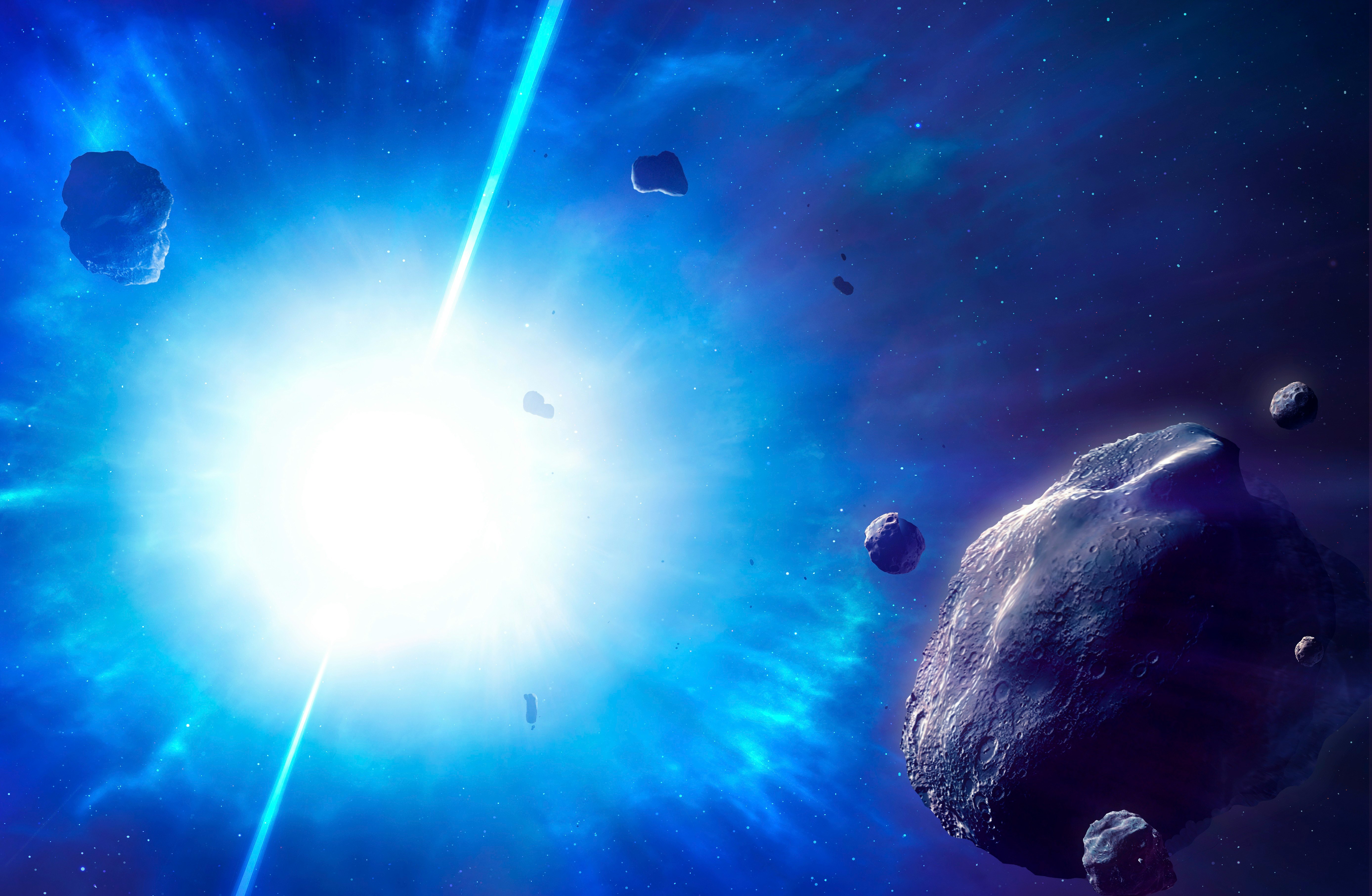
Mysterious bursts of radio waves from distant stars have a lot in common with earthquakes here on Earth, it turns out.
Earthquakes and fast radio bursts — short, intense blasts of radio waves coming from distant points in space — produce aftershocks with remarkably similar timing, according to a recent study. That may mean that at least some neutron stars have a solid crust on their surfaces, which cracks or shifts, creating starquakes that send fast radio bursts screaming out into space. If University of Tokyo astrophysicist Tomo Totani and his colleagues are right, starquakes could shed new light on the physics of these weird stellar corpses.
They published their findings in the Monthly Notices of the Royal Astronomical Society.
Shaking Up Astrophysics
One thing that solar flares, earthquakes, and fast radio bursts from deep space all have in common is that they’re just different ways of releasing pent-up energy over a period of time. Totani and his colleagues used statistical models to compare how much energy each type of event released over time, from the main event to aftershocks, and they noticed some very similar patterns in the way earthquakes and fast radio bursts release energy.
In particular, Totani and his colleagues noticed that both earthquakes and some repeating fast radio bursts seem to produce aftershocks with the same pattern. Whether you’re talking about an earthquake in Japan or a fast radio burst from a distant corner of the galaxy, the chances of observing an aftershock are very similar: between 10 percent and 50 percent, and the odds of an aftershock decrease over time. The amount of energy released by the main event — whether it’s a big quake or a sudden burst of radio waves from space — also can’t help you predict the size of the aftershock. Totani and his colleagues plotted some other key features in common between the two — enough to suggest a connection between the two seemingly very different phenomena.

Since 2007, radio telescopes around the world have measured thousands of fast radio bursts. Most of them are one-offs, but some — like the ones Totani and his colleagues studied — repeat. Physicists are still debating exactly what causes fast radio bursts, although most of the evidence points to neutron stars: the burned-out remains of dead stars, collapsed into such a dense ball that there’s not even room for atoms. All that’s left has been squashed into neutrons (and maybe even smaller particles called quarks). In particular, some fast radio bursts clearly come from magnetars, which are neutron stars with extremely powerful magnetic fields.
Some physicists have suggested that the surface of a neutron star might sometimes release gargantuan amounts of energy, in a way that is similar to how Earth’s crust releases pent-up energy in earthquakes. That idea makes sense if the surface of a neutron star is a solid crust, sitting on top of an exotic form of matter called a superfluid (some physicists have suggested that the extreme density and cold temperatures inside a neutron star could combine to form a superfluid, a state of matter that flows differently than ordinary fluid).
“In this sense, it may be similar to the Earth's crust on a fluid mantle,” Totani tells Inverse. “However, the energy source driving earthquakes and fast radio bursts may be different.”
Earth’s rocky crust floats on top of a mantle of molten rock, which is heated from below by Earth’s core. Like a pot of boiling water, that heat causes the mantle to slowly churn. That churning motion carries pieces of the crust along with it, causing continental drift, volcanism, and earthquakes. But on the much stranger surface of a magnetar, the source of the motion isn’t likely to be churning neutron magma, but something even weirder.
“In the case of fast radio bursts, it may be a very strong magnetic field of a magnetar, which gradually emerges up from interior to the surface,” says Totani.
What Goes On Inside A Neutron Star?
If Totani and his colleagues are right, starquakes could give physicists some important clues about the (so far) still mysterious structure of neutron stars — just like earthquakes have helped geologists understand the structure of our much more mundane planet.
“Starquakes would happen by cracking or rupture of solid crust, which must be related to the hardness and elasticity of the crust,” says Totani. “Future observations and theoretical interpretations would give us some information which would constrain the nature and composition of the neutron star surface crust, for which we have very few observational hints.”
More data on starquakes could also help reveal what goes on beneath the surface of a neutron star: a strange ball of superfluid neutrons and tightly squished quarks.
To get there, Totani and his colleagues will be studying measurements of a larger sample of fast radio bursts, from many more different sources, to see if the patterns they’ve spotted are common to all repeating fast radio bursts, or if they’re just a quirk shared by a few of them.
“If we find some difference depending on properties/environment of fast radio bursts (e.g., in young star-forming galaxies or in old stellar populations), it would give a new hint to reveal the origin of fast radio bursts,” says Totani.







